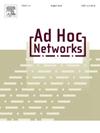URNFresh: Age-of-infomation-based 60 GHz UAV relay networks for video surveillance in linear environments
IF 4.4
3区 计算机科学
Q1 COMPUTER SCIENCE, INFORMATION SYSTEMS
引用次数: 0
Abstract
In recent years, video surveillance has been widely deployed and utilized, with linear deployment environments such as roads and rivers being very common. With the rapid development and widespread application of 60 GHz communication and unmanned aerial vehicle (UAV) technologies, 60 GHz UAV relay networks have become an ideal solution for high-rate data collection in video surveillance. In this network scenario, the collaborative scheduling of multiple UAVs has become a key issue. However, the existing scheduling schemes are usually designed for two-dimensional or three-dimensional scenarios, lacking relevant considerations and designs for the characteristics of one-dimensional linear scenarios. In addition, these methods rarely consider ensuring data freshness and the age-of-information (AoI) metric to meet the needs of latency-sensitive applications. To this end, we consider the 60 GHz UAV relay network for video surveillance, and investigate the AoI-based multi-UAV collaborative scheduling mechanism in linear environments. Firstly, We formulate the energy-storage-limited and AoI-guaranteed Multi-UAV scheduling problem, which aims to minimize the average cumulative AoI, while considering the constraints of their energy and data storage capacity. Then, we propose the hierarchical reinforcement learning-based multi-UAV collaborative scheduling mechanism called URNFresh, and design corresponding strategies for option selection and fine-grained action selection in aspects such as flight control, data collection, data offloading, and battery replacement. Finally, we conduct simulation experiments to evaluate the performance of URNFresh mechanism. Experimental results demonstrate that the proposed solution outperforms traditional reinforcement learning approaches, and achieves a significant improvement in average cumulative AoI.
求助全文
约1分钟内获得全文
求助全文
来源期刊

Ad Hoc Networks
工程技术-电信学
CiteScore
10.20
自引率
4.20%
发文量
131
审稿时长
4.8 months
期刊介绍:
The Ad Hoc Networks is an international and archival journal providing a publication vehicle for complete coverage of all topics of interest to those involved in ad hoc and sensor networking areas. The Ad Hoc Networks considers original, high quality and unpublished contributions addressing all aspects of ad hoc and sensor networks. Specific areas of interest include, but are not limited to:
Mobile and Wireless Ad Hoc Networks
Sensor Networks
Wireless Local and Personal Area Networks
Home Networks
Ad Hoc Networks of Autonomous Intelligent Systems
Novel Architectures for Ad Hoc and Sensor Networks
Self-organizing Network Architectures and Protocols
Transport Layer Protocols
Routing protocols (unicast, multicast, geocast, etc.)
Media Access Control Techniques
Error Control Schemes
Power-Aware, Low-Power and Energy-Efficient Designs
Synchronization and Scheduling Issues
Mobility Management
Mobility-Tolerant Communication Protocols
Location Tracking and Location-based Services
Resource and Information Management
Security and Fault-Tolerance Issues
Hardware and Software Platforms, Systems, and Testbeds
Experimental and Prototype Results
Quality-of-Service Issues
Cross-Layer Interactions
Scalability Issues
Performance Analysis and Simulation of Protocols.
 求助内容:
求助内容: 应助结果提醒方式:
应助结果提醒方式:


